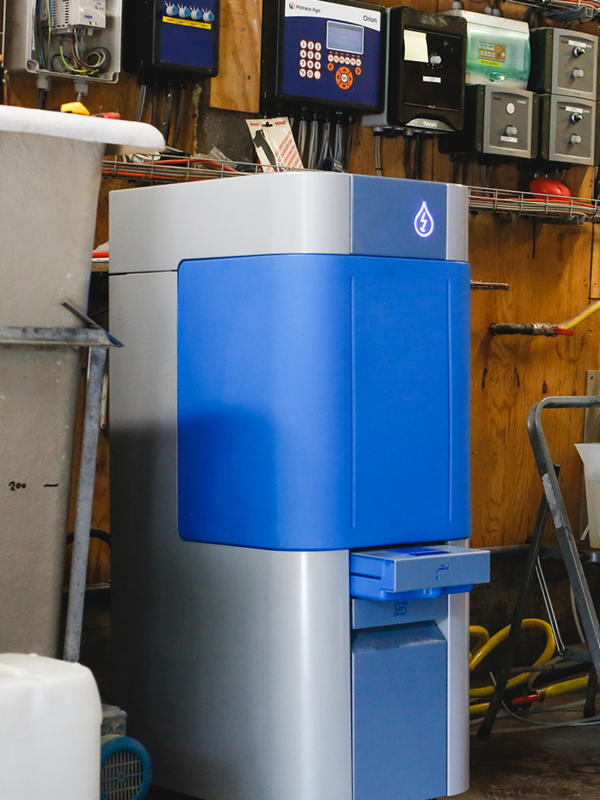Clean water is more than what meets the naked eye
Clean water is more than what the naked eye sees
In dairy farming, the link between drinking water quality and animal health is increasingly being made. Veterinarians emphasize the importance of clean drinking water, and microbiological research also underlines the need to look beyond what the naked eye sees. Because: clear water is not always clean.
Clean water, healthy animals
Clean drinking water has an effect on the health and productivity of dairy cattle. After all, a cow also eats less when it does not drink enough. That is why it is important that sufficient good quality water is available. Testing water for odour, colour, sediment and clarity is now widely recommended (1). But what if the water is not microbiologically in order? What can you do about it?
Visibly clean does not equal bacteria-free
Many livestock farmers assume that there is no problem if their animals look healthy and the water seems clear. But bacteria are invisible to the naked eye. Even clear water can be a breeding ground for microorganisms. And although not every bacteria directly causes disease, it does cost animals energy to deal with them. This is energy that would be better spent on milk production or growth.
We often hear statements like: "I clean the drinking troughs weekly with a brush, then it is good, isn't it?" Although this helps against visible contamination, it does not remove the biofilm in pipes. Biofilm is a slimy layer in which bacteria accumulate and continuously contaminate the water (2).
From chemistry to microbiology: what is in the water?
Many livestock farmers use groundwater, often treated to improve its chemical composition (such as removing iron or manganese). However, these treatments do not target microbiological contaminants such as bacteria, viruses or fungi.
Even if the groundwater is microbiologically clean at the start of the barn, it can become contaminated further along in the pipes. Even tap water can become microbiologically contaminated in the barn due to biofilm formation in pipes and drinking troughs. The result: a constant supply of bacteria towards the animal (3).

The right approach: structural and safe disinfection
To obtain really clean water, disinfection is necessary. There are various disinfectants on the market for this, often in concentrated form and packaged in jerry cans. They may be agents with a disinfecting effect, but they also have disadvantages:
- Risk of over- or underdosing
- Toxic to humans and animals if used incorrectly
- Limited shelf life of the agent
- Difficult and environmentally harmful disposal of empty packaging
A more sustainable alternative is to produce a disinfectant on site, directly linked to an automatic dosing pump. This is possible with the Watter system. This system ensures:
- Always the correct, safe dosage
- No storage or transport of hazardous substances
- A continuously clean water system
- Reduction of the infection pressure in the stable
Conclusion: investing in water quality pays off
Water is perhaps the most forgotten nutrient in livestock farming. And yet it has a huge impact on the resistance, health and productivity of your animals. But clear water is not automatically clean water. Regular microbiological checks and a structural approach to disinfection are crucial. By continuously keeping your water system free of biofilm and bacteria, you prevent problems instead of having to combat them afterwards.
References
- Gd. (z.d.). Goed drinkwater, gezonde dieren. https://www.gddiergezondheid.nl/water
- Carrascosa, C., Raheem, D., Ramos, F., Saraiva, A., & Raposo, A. (2021). Microbial Biofilms in the Food Industry—A Comprehensive Review. International Journal Of Environmental Research And Public Health, 18(4), 2014. https://doi.org/10.3390/ijerph18042014
- Eenige, M & Counotte, Guillaume & Noordhuizen, Jos. (2013). Drinking water for dairy cattle: Always a benefit or a microbiological risk?. Tijdschrift voor diergeneeskunde. 138. 86-97, 99.
Want to know more about microbiologically clean water?



